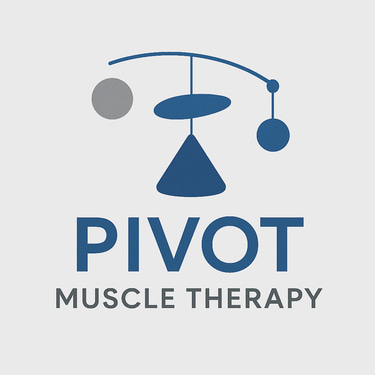Glossary
Trauma Informed Bodywork
Glossary for Trauma-Informed Bodywork
Biomedical Model of Health and Disease
A linear model of health focused on pathophysiology and biological dysfunction. This model assumes that illness can be traced to a single, identifiable cause and corrected through standardized interventions, often neglecting psychological, emotional, and social dimensions of healing.
📖 Engel, G. L. (1977). The need for a new medical model: a challenge for biomedicine. Science.
Biopsychosocial Model of Health and Disease
A nonlinear, integrative approach recognizing that biological, psychological, and social factors all play significant roles in health and illness. This model encourages therapeutic environments that foster self-agency, co-regulation, and long-term healing.
📖 Engel, G. L. (1977). The need for a new medical model: a challenge for biomedicine. Science.
Trauma
Derived from the Greek τραῦμα, meaning “wound.” Trauma is any experience that overwhelms a person's capacity to cope, leaving them feeling helpless or disconnected.
📖 Mate, G. (2003). When the Body Says No: The Cost of Hidden Stress.
📖 Mate, G. (2022). The Myth of Normal.
Overwhelm
In systems theory, overwhelm reflects a system's failure to manage internal and external stressors due to insufficient recovery. It is marked by disintegration of regulation and adaptability.
📖 Siegel, D. J. (2012). The Developing Mind.
📖 Snowdon, D. (2014). Complexity and Cynefin Framework.
Post-Traumatic Stress Injury (PTSI)
A strengths-based reframing of PTSD that highlights injury rather than disorder. According to Intentional Interviewing and Counseling, PTSI recognizes that trauma can result from acute or prolonged stress that overwhelms one’s normal coping mechanisms.
📖 Ivey, Ivey, & Zalaquett. (2016). Intentional Interviewing and Counseling.
Post-Traumatic Growth (PTG)
A positive psychological transformation following trauma, often including greater appreciation for life, improved relationships, and a deeper sense of meaning. PTG suggests healing is not just recovery, but transformation.
📖 Tedeschi, R. G., & Calhoun, L. G. (2004). Posttraumatic growth: Conceptual foundations and empirical evidence. Psychological Inquiry.
Pain (Trauma-Informed Perspective)
Defined as "how much danger your system thinks it’s in." Pain is not a direct measure of tissue damage but a protective output shaped by context, history, memory, and perception.
📖 Moseley, L. & Butler, D. (2017). Explain Pain Supercharged.
📖 Mate, G. (2003). When the Body Says No.
Stress (Selye’s General Adaptation Syndrome)
Stress is the nonspecific response of the body to any demand. Hans Selye described it in three phases: alarm, resistance, and exhaustion. Chronic activation without recovery results in breakdown or disease.
📖 Selye, H. (1956). The Stress of Life.
Chronic Pain
Chronic pain may arise not from ongoing injury, but from a sensitized nervous system and unprocessed trauma. It can be considered a state of ongoing system overwhelm and maladaptive neuroplasticity.
📖 Lumley, M. A., et al. (2019). Emotional Awareness and Expression Therapy for Chronic Pain.
📖 Urits, I. et al. (2020). Chronic Pain Pathophysiology.
Suffering
Etymology: from Latin sufferre, meaning “to bear” or “to carry under.” In trauma-informed practice, suffering refers to the personal meaning and emotional impact of pain, disconnection, or unresolved experience.
📖 Frankl, V. E. (2006). Man’s Search for Meaning.
📖 Kearney, M. (2000). Mortally Wounded: Stories of Soul Pain, Death and Healing.
Self-Compassion
Compassion (Latin compati – "to suffer with") directed inward. It includes self-kindness, mindfulness, and a sense of common humanity.
📖 Germer, C. (2009). The Mindful Path to Self-Compassion.
Mind
Defined by Dr. Dan Siegel as "an embodied and relational process that regulates the flow of energy and information." This definition places the mind within the body and between people.
📖 Siegel, D. J. (2010). Mindsight: The New Science of Personal Transformation.
Window of Tolerance
A model of nervous system regulation that describes the optimal arousal zone for functioning. Stress or trauma may cause a person to shift into hyper- or hypoarousal.
📖 Stanley, E. (2019). Widen the Window: Training Your Brain and Body to Thrive During Stress and Recover from Trauma.
SomatoEmotional Release (SER)
A therapeutic process introduced by John Upledger in which stored emotional trauma is released through the body, often during CranioSacral Therapy. It recognizes the mind-body connection in trauma storage and resolution.
📖 Upledger, J. E. (2002). SomatoEmotional Release: Decoding the Language of Life. Upledger Institute
ADDRESS
10255 Commerce Dr. Suite 148
Carmel, IN 46032
